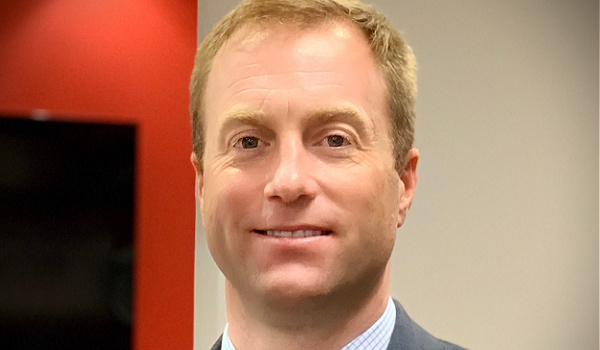By Sarson Funds, Inc.
The annual World Economic Forum gathering in Davos, Switzerland is often seen as an opportunity for the financial, political and media elite to gather and discuss the greatest problems and opportunities faced by the globe—it should come as no surprise that this year, as in recent years, cryptocurrencies, digital assets and blockchain technology were one of the marquee topics.
This year, however, even as crypto markets reeled from a months-long fit of volatility and the spectacular collapse of the Terra algorithmic stablecoin and its sister token Luna, Davos served as an exhibit of the growth, maturity, and prominence of the blockchain ecosystem, according to John Sarson, CEO of Sarson Funds.
The WEF for the first time held panels on the future of cryptocurrencies and decentralized finance, inviting blockchain leaders to participate, drawing speakers from Polygon, PolkaDot, Casper, Circle, Tether and Sarson himself, who participated as part of Casper Network’s presence.
In a recent report of Sarson Funds’ experiences in Switzerland, Sarson estimated that half of the local storefronts on Davos’ man street were occupied by blockchain or cryptocurrency firms during the event. The growing blockchain industry joined the prominent presences of Google, Microsoft, Facebook, and Salesforce in the small Swiss village.
Also of interest, according to Sarson, was the presence of a Psychedelic House, a Davos forum dedicated to plant-based medicine. The promise of psychedelic plants as treatments for a range of mental and physical maladies is a passion of several Sarson employees, including co-founder Jahon Jamali.
The traditional finance, or “TradFi,” business of the World Economic Forum went down in a nearby, well-secured building, and its grey-clad officials stood in contrast to the more colorful crypto and blockchain representatives, according to Sarson.
Most of Sarson’s time was spent in Casper Labs’ “Blockchain Hub,” an art gallery converted into an NFT gallery that hosted presentations from blockchain developers and thought leaders from around the world. The Blockchain Hub offered three days of programming including presentations by teams from IBM, Amazon Web Services, and India’s tech-hub province Bangalore that attracted standing-room-only crowds.
At the hub, “inventors and scientists took center stage, and CEOs sat and listened,” said Sarson.
Amazon stated that their customers are looking for the stability and security offered by public blockchains like Casper. IBMs’ team offered a demonstration of an atomic swap between Casper’s blockchain and their own Hyper Ledger Fabric business blockchain solution. Ethereum co-founder Gavin Wood discussed Polkadot, his Ethereum replacement project.
“Reflecting on the week as I sat upon the first leg of a three-part return trip home, it was not all too surprising to find that the lasting memories from the trip would be the new relationships that were established and the conversations that we shared,” Sarson said. “Unknowingly debating the health of stablecoins DAI and USDT with Tether cofounder Reid Collins will always make me smile, as will the encouragement I received for Sarson Funds’ educational mission by the internet’s original community builder, Lou Kerner. I deem the event a massive success for our host Casper Labs as the Casper executive team under the leadership of Mrinal Manohar and Medha Parlikar successfully shared their vision that everyone deserves enterprise-grade blockchain solutions and that Casper stands ready to deliver.”
Sarson reported that financial advisors in the U.S. are “behind the 8-ball” when it comes to understanding, accessing, and using cryptocurrencies on behalf of their clients, noting that there’s only a 5% penetration rate for crypto into intermediary-advised asset management in digital assets.
“As more regulation comes online, more advisors will better able to adopt digital assets,” said Sarson, who believes that “eventually 100% of advisors will be advising their clients on digital assets.”
Sarson also discussed the current cryptocurrency environment highlighting what investors and advisors should expect in the months to come and noting an ebbing of speculator hype and a growth in organic users in the digital asset ecosystem. As this happens, Sarson expects cryptocurrency prices to gradually decouple from stocks.
At Davos, Sarson declared summer 2022 as “regulation summer” for crypto.
“The old narrative around cryptocurrency being an inflation hedge is broken. It has been trading like a risk asset since July 2021. Issues such as the ones involving Iron Finance, Olympus DAO and more recently LUNA/UST, in which $60B was erased from value of people’s portfolios, has resulted in investor confidence being broken,” said Sarson. “With protocol owned liquidity projects and algorithmic stable coins, it’s three strikes and you’re out. It will take time before confidence is rebuilt around DeFi. We have an open invitation for regulation as SEC, CFTC, and other regulating bodies have been building up their staff around cryptocurrency.”
Yet Sarson also said there are many reasons for confidence and optimism this year, noting that this is the fifth time cryptocurrency has gone through an 80% correction over the past 12 years and that while the recent bull market ended, enthusiasm and exuberance did not.







